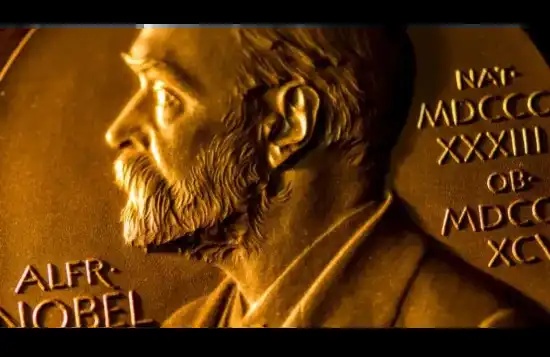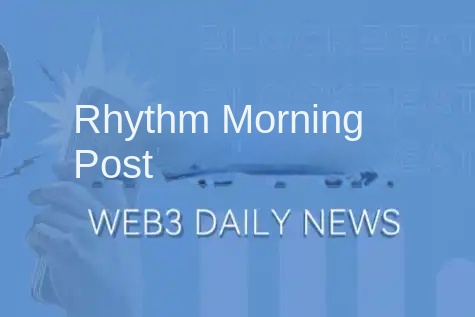Rook dissolved and surged four times, how did the "DAO predator" hunt down the DAO treasury?
In the cryptocurrency industry in 2017, what did individual investors rely on to protect their rights when project behavior did not match the contract or commitments?
Relationships, police, rights protection groups, DDW, and the conscience of the team.
However, since experiencing the DeFi Summer, governance tokens have ridden the bull market and, along with the rise of DAO concepts, governance has almost become the primary use case for new token issuances in the crypto market. What is the actual situation of governance? Each participant has their own answer.
Interestingly, in the bear market, along with the continuous low prices and community activity, a trend of "acquisition-style" governance using RFV (risk-free value) strategy has emerged.
Rook skyrocketed due to dissolution proposal
Recently, everything related to Rook's outbreak started with a proposal worth $6.1 million here.
The Rook core team submitted a salary proposal to the governance forum. The proposal has sparked dissatisfaction within the community since its release. The community believes that, considering the team's previous actions and the current market background, the team should not receive such a high level of incentives.
Coincidentally, a community user had been following Rook based on the RFV strategy. Taking advantage of the dissatisfaction caused by the Rook team, the astute community member Wismerhill began a governance counterattack on March 22nd. He meticulously listed the reasons for dissolving the Rook DAO, including:
The mismatch of interests between the project team and the DAO community;
The team has the right to reject all unfavorable proposals from the community;
Amidst the sharp decline in token trading volume and slow product development, 22 community members need to withdraw $6.1 million in compensation from the treasury, with only 10% being in ROOK tokens and the rest mainly in stablecoins.
The community treasury holds approximately 44 million US dollar tokens, but the current market value of ROOK tokens is only 10 million US dollars, mainly due to the team's inaction.
Therefore, the proposal requires the dissolution of Rook DAO and the proportional distribution of the treasury to ROOK token holders, with each token receiving compensation of approximately $54.9. At this time, the price of their token ROOK is only around $13.
After multiple debates between the community and developers for three weeks, a preliminary agreement was finally reached around April 5th, during which the price of ROOK also increased significantly. Ultimately, the "freedom" movement initiated by Rook DAO holders was declared successful with the approval of the core proposal for the establishment of RFV entity Incubator DAO. Incubator DAO stated that token holders can unlock their ownership of the treasury, while the Rook Labs team can continue to work on their project without the burden of worthless governance tokens.

From March 22nd when the community initiated the buyback proposal to the final DAO proposal approval, ROOK's increase was approximately 230%. At the time of writing this article, the increase was 329%, ultimately reflecting the value of the treasury in the ROOK token.
What is the RFV strategy?
RF stands for "risk-free", while RFV stands for "risk-free value". According to the actual situation in the industry, the RFV strategy can be simply understood as: when the project treasury is not limited to its own tokens, and the treasury market value is significantly higher than the project token market value, the use of treasury funds can be decided through governance proposals. These uses mainly include: direct token buyback, dividend distribution, or project dissolution.
This governance-style purchasing is not new on Wall Street. Carl Icahn was one of the earliest activist shareholders, who established his position as a hostile takeover master through the 1985 shock of the global airline acquisition and asset divestiture. In all these years of his career, he has never given up using hostile takeovers.
Although the market has mixed opinions about his approach, his actions have indeed improved the capital efficiency of some companies and dealt a blow to the management of some companies who were just holding onto their positions without doing anything. Fortune magazine once evaluated him as "he may have made more money for shareholders than any other activist investor on the planet."
According to the hostile takeover incident of Carl Icahn, Hollywood once created the classic movie "Wall Street". In the movie, Michael Douglas' character uttered the classic line: "Greed is good. Greed is right. Greed works."
When it comes to the application scenarios of the RFV strategy in the cryptocurrency industry, it generally targets projects that have undergone large-scale public fundraising and can truly be governed.
Failure is the norm
If you think that retail investors in the secondary market can easily dissolve projects or make protocols return funds using governance tokens, then you are completely wrong.
As a veteran in the cryptocurrency industry who delves deep into each potential project and focuses on project progress and governance proposals, RFV hunters are only losing more than winning. The main reasons include: The founding team does not recognize DAO and turns DAO funds into their own "treasury"; the founding team obtains absolute control through various implicit conditions; and they evade proposals for various reasons (such as legal issues).
Solana lending and stablecoin issuance platform Parrot raised over $69 million in public funding during Solana Summer, with a total community treasury of $85 million, far exceeding its token market value. An introduction from CM (9,5) here shows us why profiting from RFV is not successful on Parrot:
During the past year and a half, the project team has lost 8 million dollars due to bad debts, poor investments, and hacker attacks.
The co-founders also invested 10 million yuan in an Ethereum multi-signature wallet, but the team is not willing to disclose the specific details of the transfer of this amount as an investment, and is even unwilling to disclose the address of the multi-signature wallet.
The founder made a large purchase using the treasury during a high ETH period without approval from the DAO.
On April 2nd, 300,000 US dollars were transferred without the knowledge of the community.
Meanwhile, communication between team members and the founder is also very difficult. They only have one hour of communication time per week, and all actions need to be instructed by the founder. This has led to an absolute disconnect between the community treasury and token price. It can be said that the community's funds are completely at the discretion of the founder. Similarly, the Hector project from the Olympus fork on the Fantom chain is also facing the same situation here.
The most controversial RFV governance event recently is the attempt by Aragon to transfer governance rights. Considering Aragon's historical status, token market value, and activity in the DAO field, this matter has attracted widespread attention. Not only have all the RFV hunters mentioned above appeared, but also the well-known asset management institution Arca in the industry has taken the lead in proposing a plan, which mainly provides partial funds based on RFV to token holders.
Aragon is a DAO governance pioneer project that started in 2017. Its initial response was to blacklist relevant proposers and active users, attempting to transfer governance rights from tokens and suspecting itself of being attacked by the RFV organization with a 51% attack.
The announcement from Aragon has sparked strong dissatisfaction within the community, prompting Aragon to issue a further statement to demonstrate its basic principles guided by DAO organization and to lift all blacklists to appease the community, as well as engage in further communication with all parties. In addition, Aragon founder Luis Cuende has also released a preliminary proposal for a $30 million buyback, and the community is in close communication.
治理迷思
translates to
Governance Misconceptions
in English.
Compared to the teams of well-known projects Rook and Aragon, there are more teams in the market that have already disappeared, as well as teams that firmly control the community treasury and gradually erode funds in one way or another, and many users are no longer surprised by this.
Not enforcing rights is a win-win situation, and it makes sense for project teams to focus on development without paying attention to prices. But when necessary, is the team willing to fulfill their promises and treat governance tokens as an important part, or do they see them as nothing?
Any industry and startup company cannot guarantee 100% success, and when a project fails, how the team can balance the interests of all parties and gracefully let go is what the industry should actively explore under the current market conditions. A large number of homogeneous projects are launched in a bull market, and after multiple rounds of market baptism, it is already obvious whether it is worth continuing to operate. Unfortunately, the governance tokens that have emerged as a result rarely decide the major development direction of the project.
Whether you are a degen who rushes in without asking for the source, or a rational investor who buys at a reasonable price, how can you ensure that your team can continue to implement the roadmap and fulfill the promises made when launching your token after financing, going online, and getting rich, instead of facing the sea and blooming flowers, or starting all over again? What should users in the secondary market rely on to maintain their legitimate rights and interests?
As of now, for unarmed retail investors in the secondary market, imitating Carl Icahn through governance "rights protection" may not be the best choice, whether in terms of token quantity or personal influence.
During the dissolution of Rook, the messages left by community members under 0xWismerhill's Twitter account. Not sure if they represent the true voice of the community?

Reference materials:
「That』s Our 2 Satoshis」 —DAO Dilemmas: Unraveling Aragon's Governance Controversy
The hottest investor in America
Welcome to join the official BlockBeats community:
Telegram Subscription Group: https://t.me/theblockbeats
Telegram Discussion Group: https://t.me/BlockBeats_App
Official Twitter Account: https://twitter.com/BlockBeatsAsia


 Forum
Forum Finance
Finance
 Specials
Specials
 On-chain Eco
On-chain Eco
 Entry
Entry
 Podcasts
Podcasts
 Activities
Activities
 OPRR
OPRR









